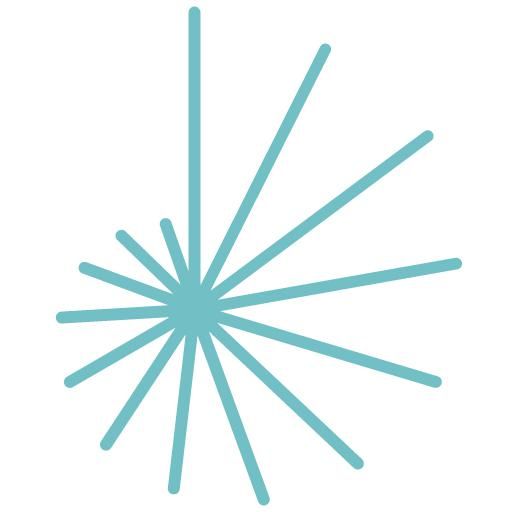Sign up for Big Think on Substack
The most surprising and impactful new stories delivered to your inbox every week, for free.
Cramming for a test and having a hard time understanding something? Might be best to go away and come back after a while.
Your brain is constantly fluctuating between a “learning” mode and an “understanding” mode. When you’re sitting there reading (and re-reading!) a textbook, unable to make sense of it, your brain is actually learning. It just takes the decompressing part of your brain for it to all be unpacked.
It’s called the neural chunk theory and you can learn to utilize it to your advantage by learning how to study differently; small bursts of inactivity and breaks can really make a big difference in how to memorize seemingly difficult information by combining bigger and bigger “chunks” of information until you understand the big picture. It’s fascinating stuff.
BARBARA OAKLEY: A very important idea that people are often unaware of is the fact that we have two completely different ways of seeing the world, two different neural networks we access when we’re perceiving things.
So what this means is when we first sit down to learn something—for example, we’re going to study math. You sit down and you focus on it. So you focus and you’re activating task-positive networks. And then what happens is you’re working away and then you start to get frustrated. You can’t figure out what’s going on. What’s happening is you’re focusing and you’re using one small area of your brain to analyze the material. But it isn’t the right circuit to actually understand and comprehend the material. So you get frustrated. You finally give up, and then when you give up and get your attention off it it turns out that you activate a completely different type of or set of neural circuits. That’s the default mode network and the related neural circuits. So what happens is you stop thinking about it, you relax, you go off for a walk, you take a shower. You’re doing something different. And in the background this default mode network is doing some sort of neural processing on the side. And then what happens is you come back and voila, suddenly the information makes sense. And, in fact, it can suddenly seem so easy that you can’t figure out why you didn’t understand it before. So learning often involves going back and forth between these two different neural modes – focus mode and what I often call diffuse mode which involves **** resting states. You can only be in one mode at the same time
So you might wonder, is there a certain task that is more appropriate for focus mode or diffuse mode? The reality is that learning involves going back and forth between these two modes. You often have to focus at first in order to sort of load that information into your brain and then you do something different, get your attention off it and that’s when that background processing occurs. And this happens no matter what you’re learning. Whether you’re learning something in math and science, you’re learning a new language, learning music, a dance. Even learning to back up a car. And think about it this way. Here’s a very important related idea and that is that when you’re learning something new you want to create a well practiced neural pattern that you can easily draw to mind when you need it. So this is called a neural chunk and chunking theory is incredibly important in learning. So, for example, if you are trying to learn to back up a car when you first begin it’s crazy, right. You’re looking all around. Do you look in this mirror or this mirror or do you look behind you? What do you do? It’s this crazy set of information. But after you’ve practiced a while you develop this very nice sort of pattern that’s well practiced. So all you have to do is think I’m going to back up a car. Instantly that pattern comes to mind and you’re able to back up a car. Not only are you doing that but you’re maybe talking to friends, listening to the radio. It’s that well practiced neural chunk that makes it seem easy. So it’s important in any kind of learning to create these well practiced patterns. And the bigger the library of these patterns, the more well practiced sort of deeper and broader they are as neural patterns in your mind, the more expertise you have in that topic.
And chunking was first sort of thought of or explored by Nobel Prize Winner [Herbert] Simon who found that, if you’re a chess master, that the higher you’re ranking in chess, the more patterns of chess you have memorized. So you could access more and more patterns of chess.
So research began developing and what they found was that the better your expertise at anything, the more solid neural patterns, what I call neural chunks you have. So, for example, if you might know how to do mathematics very well. Well you’ve got certain patterns related to multiplication and you’ve practiced quite a bit with them. And so you can pull them instantly to mind. And likewise, division. And then you go higher so you’ve got calculus. You’ve got the concept of the limit. You’ve got integrals, derivatives. And you practice with each one of those enough so that it is almost like backing up a car. All you have to do is think oh, I’ve got to take this derivative and boom, off you go. You’re taking your derivative and it seems very easy to you. So a challenge that we’ve had is for a long time, particularly in mathematics education, it was felt that if you practiced too much that it would kill your creativity.
And that’s actually not true. You want to do the right kind of practice where you’re interleaving and doing one technique and then trying that with another technique. You don’t want to just be doing the same thing over and over again. But practicing by – here’s a good way to practice developing a chunk. Let’s say that you’ve got a homework assignment. You’ve got this homework problem and it’s a really difficult homework problem. So what you tend to do, well you do it and you turn it in. That is the equivalent of you have just sung a song one time and thinking that you know how to sing that song beautifully in front of an audience. Well, it doesn’t work that way.
A good thing to do when you’re learning something that’s difficult is find key, in math, key problems and then see if you can work it cold. If you can’t, take a peek at whatever hints you need to be able to finish working it. Then maybe a little later try working it again cold without looking at the answer. And maybe you go further. The next day try it again. Go a little further and practice it. What you’re trying to do is to develop the same patterns that you would develop if you practice singing a song a number of times.
And if you do this with key problems in math, or if you’re learning a language key conjugation patterns, for example—Then those patterns become automatic.
So, for example, with your problem after several days of practice you find you’ve worked it out enough times by pencil that when you just look at the problem you can step through all the solution steps in your mind. You’ve created a valuable chunk. And so then when it comes test time and you’ve got maybe five, ten of these key problems – so you can just look at them and know what you’re supposed to be doing.
Suddenly when you’re taking that test you can pull this chunk up and connect it with this chunk and solve new problems you haven’t seen before and it’s a really, really powerful technique is to realize that all learning involves getting these neural chunks together.







